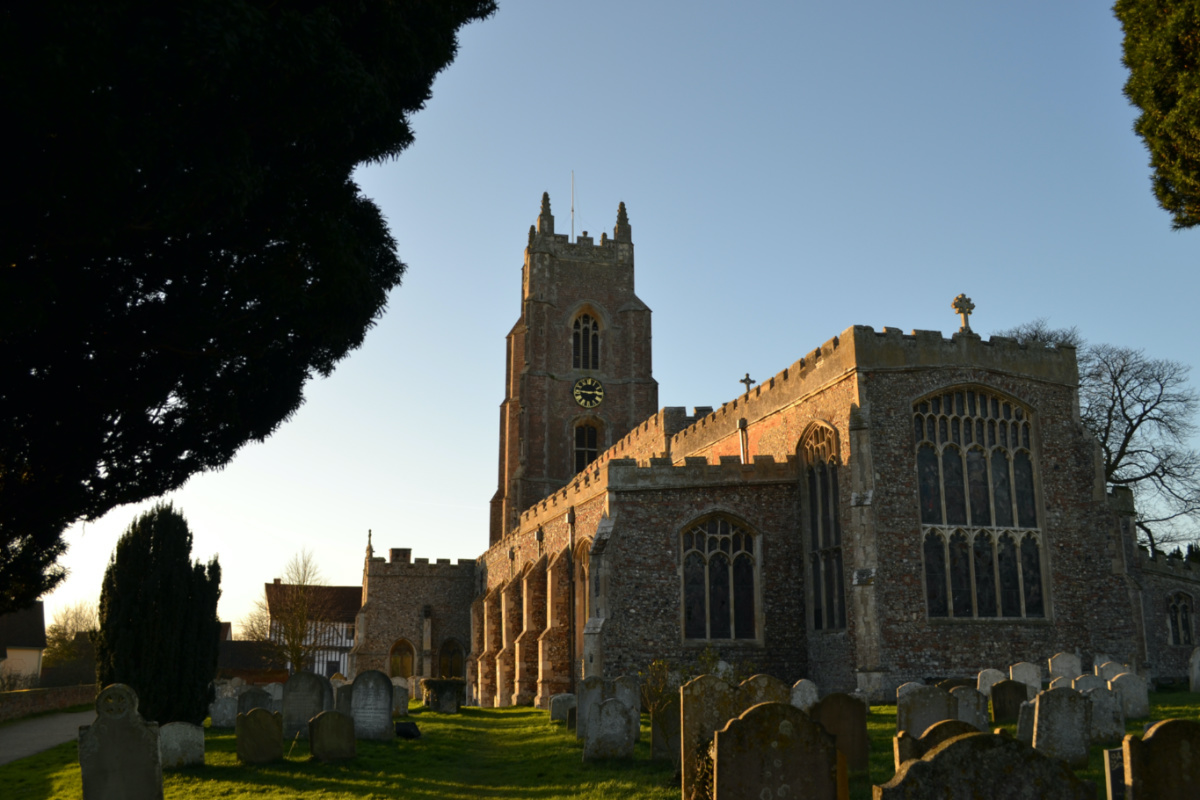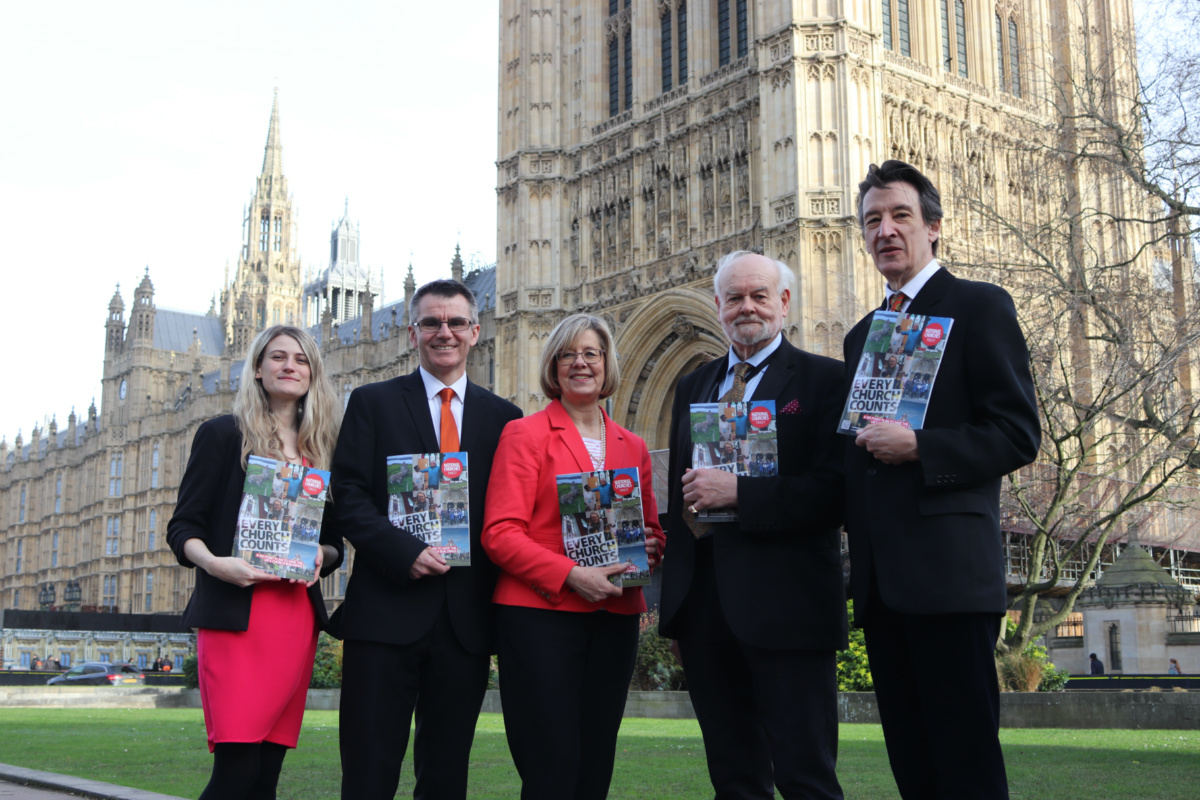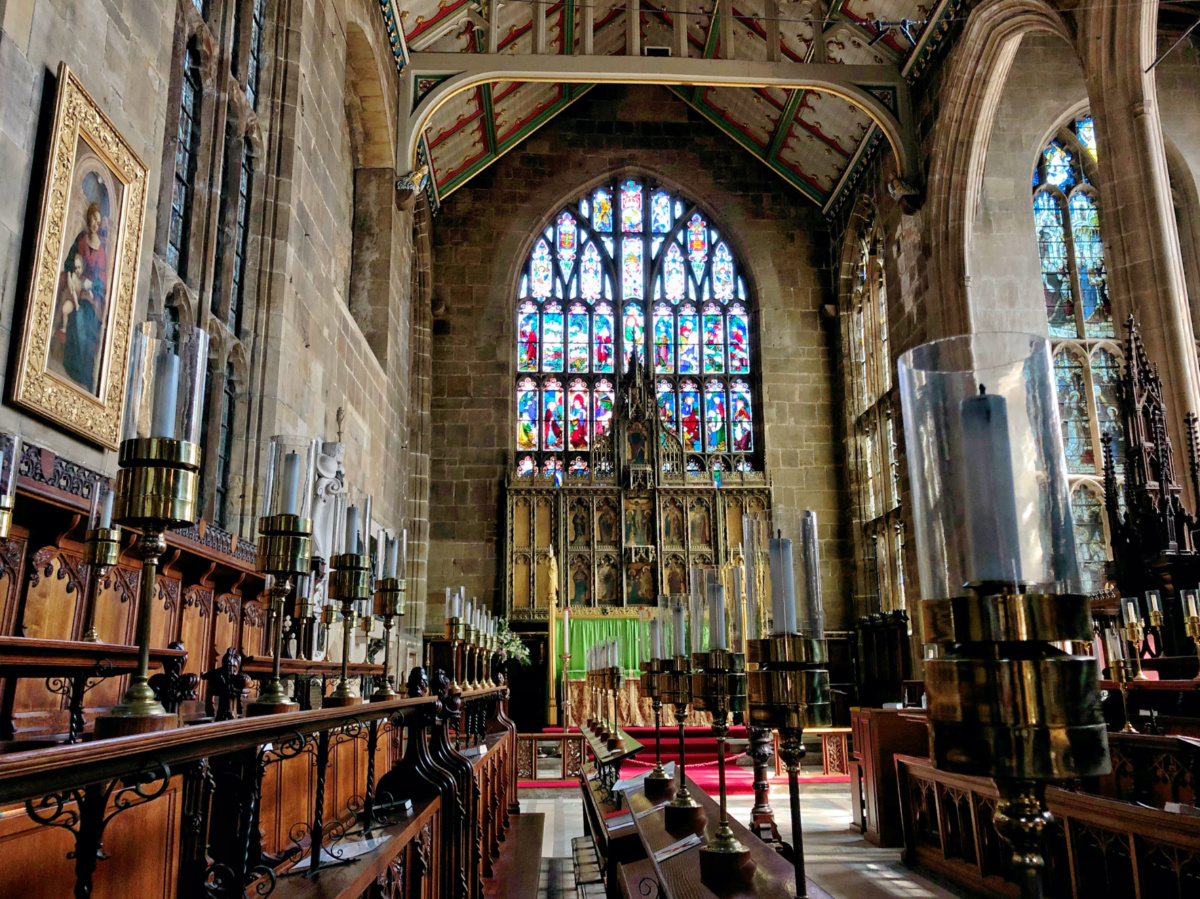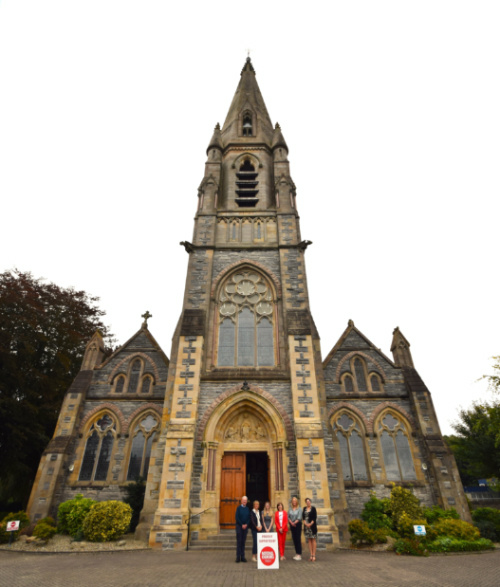
ANGELA YOUNGMAN reports on efforts to conserve England’s religious heritage…
Immortalised by landscape painter John Constable, St Mary’s Church in Stoke by Nayland in Suffolk appeared in many of his paintings. It is now on Historic England’s At Risk Register, having had a stained glass window fall out of its frame, part of a wall collapse and urgent work over the chancel to make the roof watertight.
St Mary’s is not alone in its listing. Fifty-three places of worship were added to the At Risk Register in 2023, bringing the total number of ecclesiastical buildings registered to 943, compared to 919 the previous year. Among other newly registered additions are St George-in-the-East, Stepney – designed by Nicholas Hawksmoor, it needs a full repair after water damage, and St Michael & All Angels in East Sussex where medieval wall paintings are in danger.

St Mary’s Church in Stoke by Nayland in Suffolk is among the churches on Historic England’s At Risk Register. PICTURE: Ian and Kate/Shutterstock
The figures are only the tip of the iceberg. A manifesto entitled ‘Every Church Counts’, issued by the National Churches Trust indicates that since 2013, more than 3,500 churches have closed. Many others are at risk of closure, which could affect communities in towns, cities and rural areas. The Church of Scotland is currently seeking to close around 40 per cent of its churches, and 25 per cent of historic Welsh churches have closed over the past decade.
“[O]ur vision is that church buildings across the UK remain open, in good repair with their heritage secure and being used for worship and community use.”
– Sir Philip Rutnam, chair of the National Churches Trust
The National Churches Trust has called for action to be taken, identifying six crucial measures. These include:
• Creating a network of professional support workers helping local volunteers and clergy responsible for the buildings;
• Creating greater awareness of the community role undertaken by churches, and how they can provide an ideal site to locate community support services;
• Making churches accessible seven days a week wherever possible;
• Creating a historic church tourism strategy pointing out that there are potential UNESCO world heritage designations given the importance of the Celtic Christian sites to be found across the West Country, Wales and Northern England and the unique wool churches of Norfolk and Suffolk; and,
• The need to create a long term national plan co-ordinating government, heritage organisations and denominations with £50 million in additional funding being made available purely for long term church heritage, with funds being derived from public money as well as matched funding in order to incentivise charitable donations.
Many of these churches have been in existence for hundreds of years, some dating back to Saxon times. Changing population patterns and the sheer cost of maintenance are now causing problems due to shrinking congregations with far fewer people going to church on a regular basis.
Building upkeep has not kept pace with available finances and some roof repairs to historic churches can cost over half a million pounds alone. Even daily operating costs in terms of heating, lighting and basic facilities can be high.

Launching ‘Every Church Counts’. From left to right – Rachael Adams, communications manager for National Churches Trust; Karl Newton, deputy CEO of the NCT, Clair Walker, chief executive of the NCT, Lord Chartres Peer in the House of Lords and vice president of the NCT, and Eddie Tulasiewicz, head of policy & public affairs for the NCT. PICTURE: Courtesy of the National Churches Trust (NCT).
In Dorset, the Grade I-listed church of St Nicholas of Myra possesses have a roof that is ‘held up by gravity’, with fractured joints, rusty nails and stone roof tiles in poor condition.
At Stoke by Nayland, parishioners were faced with raising £150,000 to pay for repairs. Grants helped but they also had to undertake a variety of community fundraising activities including an interdenominational ‘Ride & Stride’ for cyclists and walkers.
It is not just centuries old rural churches that are experiencing difficulties. St Mark’s Methodist Church, Tottenham, in London combines Victorian neo-Gothic and 1930’s art deco and has a predominantly West African congregation. It forms an integral part of the community including providing a soup kitchen, warm space and after-school activities. Engineers recently discovered major structural problems requiring urgent repairs costing over £40,000.
Sir Philip Rutnam, chair of the National Churches Trust, highlights the scale of the problem.
“[O]ur vision is that church buildings across the UK remain open, in good repair with their heritage secure and being used for worship and community use,” he says. “With over 38,500 buildings, no single action can fix the problem; action is needed by churches locally, denominations nationally and by heritage organisations and Government itself.”
Church buildings have long been an integral part of many communities and, in many cases, are now being used to provide essential facilities that might otherwise not be available. Some are being adapted to provide community-owned businesses operating in part of the building which often involves the creation of a village shop or small café in the vestry to act as a local hub allowing any surplus funds generated from the business to be reinvested in the building.
The Plunkett Foundation, a charitable organisation, has been particularly active in encouraging such activity by providing help and advice through a ‘Places of Worship’ campaign. It is a concept that is popular in both rural and urban areas allowing churches to develop new revenue streams that can be put to use helping provide additional services such as a Pembrokeshire church working with veterans recovering from PTSD.
That church – St Madoc of Ferns near Haverfordwest – covers three parishes and two small villages. Declining congregations meant that the church was facing closure. After discussions, local people opted to keep the church open by developing heritage related and community arts facilities. This also allowed them to develop charitable work with armed forces veterans suffering from PTSD.

The interior of St Mary’s Nottingham. PICTURE: Courtesy of Visit Nottingham.
Tourism is undoubtedly a key element in the preserving the nation’s church buildings for future generations. According to Visit Britain more than a fifth of all inbound trips include a visit to a religious building, equating to about seven million visits annually.
Visit Nottinghamshire’s Jack Woolley tells Sight that historic churches “have an important part to play in tourism throughout our region”.
“Whether it’s St Mary’s Church in the Lace Market where Robin Hood was supposed captured by the Sheriff of Nottingham, or its namesake church in Edwinstowe where Robin married Maid Marion, our churches are woven into the story of Nottinghamshire,” he says. “As such they’re popular with visitors throughout the year, and a valuable part of our tourism offer.”
Over in Wales, Arfon Hughes, of Teithiau Cerdded Dyfi Walking Tours, points out that “I get a lot of demand. People come to see the churches because we have a unique plethora of religious buildings including those of the Quakers. But church buildings are suffering, and many are at risk. Tourism helps raise awareness and community use would make them even more sustainable.”
We rely on our readers to fund Sight's work - become a financial supporter today!
For more information, head to our Subscriber's page.

Strabane Church of the Immaculate Conception. PICTURE: Courtesy of the National Churches Trust (NCT)
In Strabane, Northern Ireland, the Church of Immaculate Conception faced rising maintenance costs. After research, it opted to install a museum and guided tours, attracting over 100,000 visitors a year and allowed them to develop a way of helping younger people in the area find work in the heritage & conservation sector.
For some churches, an unusual tourism angle has developed – champing (the word is a portmanteau of church and camping). Organised by the Churches Conservation Trust, it is a simple idea providing an opportunity to stay overnight in a historic church like the 12th century church of St Botolph, Limpenhoe, in the Norfolk Broads.
Under the scheme, basic accommodation – such as fold out beds and tea/coffee machines – is provided, enabling visitors to camp out overnight on an exclusive basis. Space availability frequently outstrips demand, with Chana James, of the Churches Conservation Trust, commenting that “champing is a great way to have a unique experience in a historic church”.
“The outstanding variety and sheer wonder of our churches and places of worship boost visits right across our nations and regions, encouraging people to explore a destination year-round and often encouraging visits to other businesses and attractions, supporting local economies,” adds a spokesperson for Visit Britain.
“Visiting churches puts people in touch with local history like nowhere else – getting them to think about the residents behind the buildings, statues and plaques that commemorate local life, creating lasting connections that inspire future travel.”
In a recent appeal, Sir Michael Palin, vice-president of the National Churches Trust, believes that churches are a “vital and much-loved part of the UK’s history”.
“[W]e need to act now to prevent the loss of tremendously important local heritage,” he says. “If you care as much about the future of these much-loved buildings as I do, you’ll find that the National Churches Trust’s ‘Every Church Counts’ offers a way forward for these wonderful buildings.”






